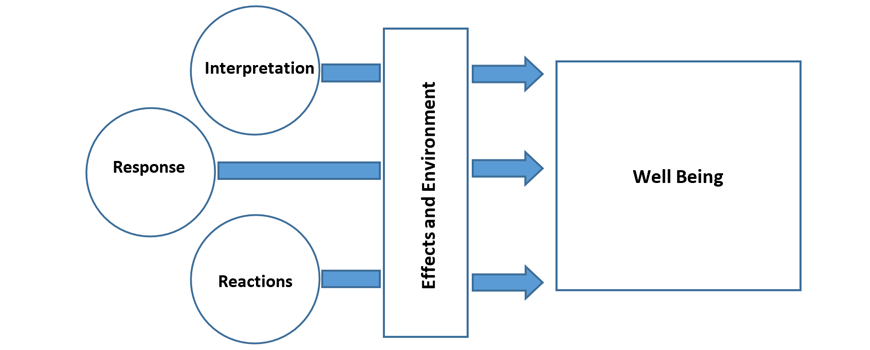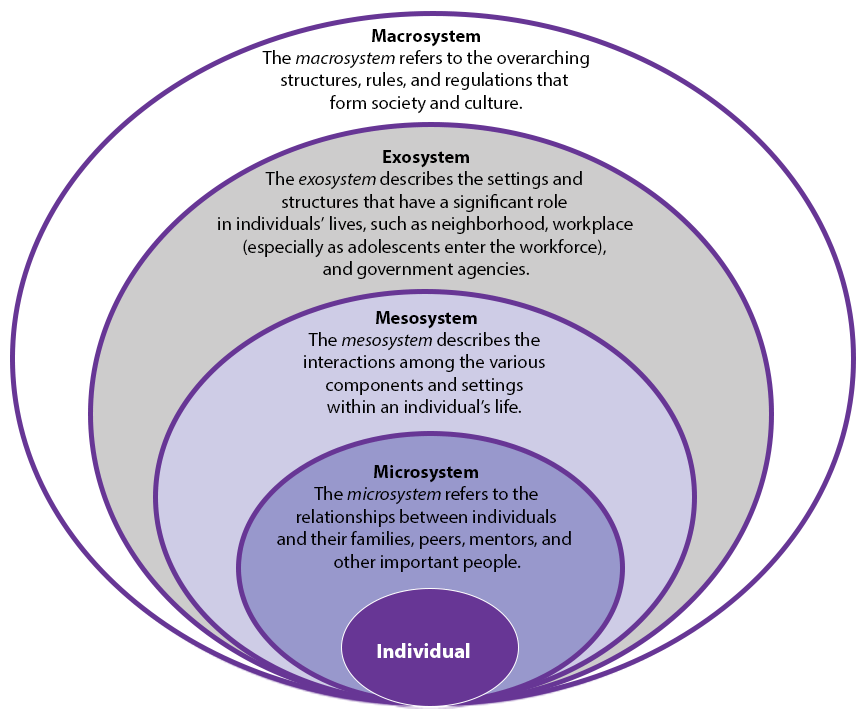Understanding Emotion Regulation

Emotions are a complex pattern of bodily and mental changes that include physical, emotional, mental, and visible expressions, or behavioral reactions made in response to a situation perceived as personally significant, and in response to both internal and external stimuli.6, 5 As youth develop through adolescence, they experience increased demands on their interpersonal and social growth. They encounter more complex situations that require them to expand their emotion regulation skills. Youth, like all individuals, use these responses to react to their experiences with their ability to regulate their emotions expanding as they develop and mature.
Emotional development and emotion regulation are two important aspects of all individuals’ growth and development.
Select each to learn more.
Emotional development is defined as the “emergence of specific affects, the growth of emotion regulation, and the increasing integration of emotion with social and cognitive development.”7
Emotion regulation refers to the processes (e.g., behaviors, skills, strategies, etc.) by which individuals increase, maintain, and decrease both positive and negative emotions attempting to influence which emotions they experience, when these emotions are experienced, and how these emotions are expressed to manage “emotionally charged states.”9, 8, 11
When thinking about emotion regulation and youth development, two theoretical models are of note. The process model of emotion regulation and the relational view of emotion regulation. These models are helpful to consider in a positive youth development program. They look at internal factors and environments that may influence both the source of the emotions, and how youth learn to regulate their emotions. Management of emotions is related to various internal and external processes. Throughout childhood and into adolescence, the internal and external processes that impact emotion regulation change based on factors such as biology, peers, family, culture, and society. These models help us understand the complexity of emotions and set a foundation for understanding emotion regulation.
Select each to reveal the two models.
The process model of emotion regulation integrates theories based on internal processes like how your nervous system responds to strong emotions, your thoughts, and how you choose to behave when experiencing a strong emotion. This model is based on theories of stress and coping (such as the cognitive mediational model)17 that focus on how internal processes interact to produce various emotions.18, 19 It is believed that emotions are a result of individuals’ understanding of the effects of what is occurring in their environment (i.e., by trying to understand their interpretations, responses, and reactions to emotions) and how what is occurring influences their well-being.19

To explain how individuals regulate their emotions based on these internal processes, the process model of emotion regulation proposes five stages in the regulation process. These stages can occur simultaneously, sequentially, and/or be repeated multiple times within one situation or circumstance.
Situation selection: when individuals approach or avoid certain people, places, or objects to increase or decrease the likelihood they will be in a situation where they experience certain emotions.9
Situation modification: describes individuals’ efforts to modify their situation(s) in attempts to alter stimuli or triggers that elicit emotional responses.
Attentional deployment: refers to how individuals influence their emotions by how and where they direct their attention.
Cognitive change: refers to how individuals regulate their emotions by changing how they appraise or think about a situation to alter the situation’s emotional impact and significance.
Response modulation: refers to when individuals have already begun to experience an emotion and they engage in efforts to influence their physiological, experiential, or behavioral responses.9, 18
The relational view of emotion regulation suggests the interactions and relationships among individuals and their environments contribute to individuals’ management of emotions.21 This view can be best understood through an ecological systems perspective of human development, which proposes that growth and development are a result of ongoing interactions with the environment.22, 23 Within the ecological systems perspective, there are four systems (microsystem, mesosystem, exosystem, macrosystem) within which individuals interact with their environment.

Individuals’ ongoing interactions and relationships within these systems affect different processes (i.e., how they think) and outcomes (i.e., their well-being and emotional development). Considering emotions with this way of thinking, it is believed emotions are a combination of inputs from sources like our senses, thoughts, and chemical and biological interactions within our bodies as well as from the places where we live, work, and socialize. In addition, all of these inputs continuously influence each other.24 The relational view of emotion regulation suggests that individuals and environment are intertwined in the development of emotion; that is, emotions are a result of the relation between the person experiencing an emotion and the object (e.g., animate or inanimate object, tangible or intangible) of that emotion.25 Furthermore, having strong family and peer connections was associated with youth’s greater abilities to manage their anger and control peer conflicts,28 which suggests that positive interactions with family and peers may be able to help youth regulate negative emotions.
Download Workshops
| Understanding Emotion Regulation This workshop includes practice for understanding the relationship between emotion regulation, or managing responses to situations and emotions that can produce negative responses, and positive youth development. Successful implementation of this workshop will ultimately help youth program staff reflect on how they can support youth’s emotion regulation. |